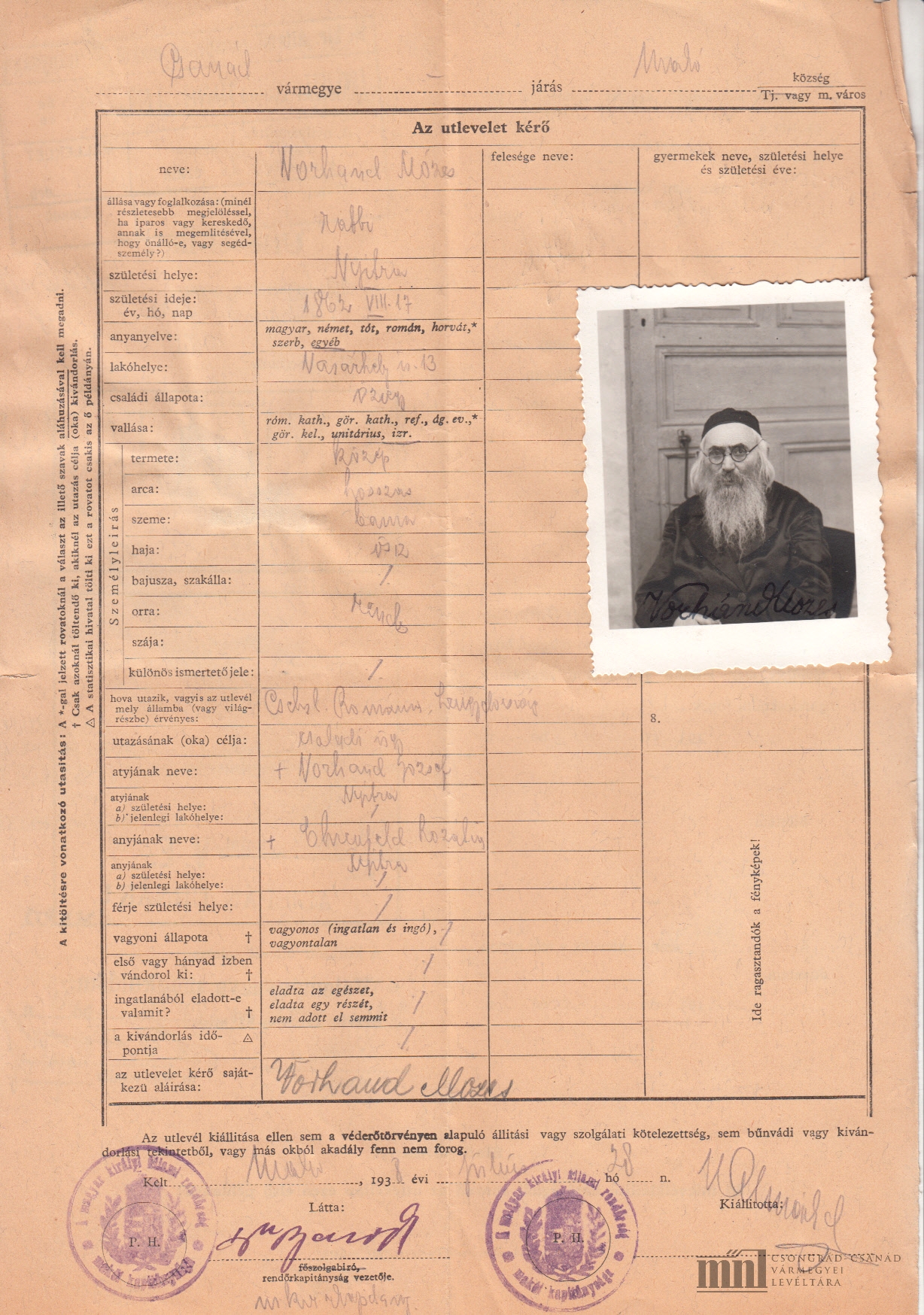Mivel vádolták meg a makói orthodox főrabbit?
Vorhand Mózes főrabbi (1862–1944), az Ohel Mose [Mózes sátra] szerzője, 1913-ban érkezett Nyitráról Makóra. Jelentős talmudiskolát tartott fenn. A két világháború között az Orthodox Központi Iroda képviselőtestületének tiszteletbeli elnöke volt és gyakran fordult elő a neve az orthodox sajtó hasábjain. Mai tiszteletét az egykori közösségi vallási életen túl 1944-ben bekövetkezett erőszakos halála és a szegedi deportáló vagonok elcsatolása, átirányítása alapozta meg. A makói csendőrök kémek bújtatásának vádjával vitték a makói csendőrségre és verték halálra az agg főrabbit. Halálos ágyán közösségének ígéretet tett, hogy az Örökkévalónál imádkozik értük és közben jár, hogy ne essen bajuk. A közösség nagy része a megsemmisítő tábor helyett osztrák mezőgazdasági mintatáborokba került, így sokan túlélték a háborút és visszatértek Makóra.
What was the Orthodox chief rabbi of Makó accused of?
Chief Rabbi Moses Vorhand (1862-1944), the author of Ohel Moshe [Moses’ Tent], came to Makó from Nyitra in 1913. He maintained a prominent Talmudic school. Between the two world wars he was honorary chairman of the Board of Deputies of the Orthodox Central Bureau and his name appeared frequently in the Orthodox press. His present-day respect was based on his violent death in 1944, beyond the religious life of his former community, and the annexation and rerouting of the deportation wagons from Szeged. The gendarmes of Makó took the aged Chief Rabbi to the Makó gendarmerie on charges of harbouring spies and beat him to death. On his deathbed, he promised his community that he would pray to the Eternal One for them and would walk in the meantime so that no harm would come to them. Most of the community were sent to Austrian agricultural model camps instead of extermination camps, so many survived the war and returned to Makó.

Vorhand Mózes rabbi útlevél kérelme. Makó, 1938
Passport application of Rabbi Mózes Vorhand. Makó, 1938
© MNL Csongrád-Csanád Vármegyei Levéltár, Makó